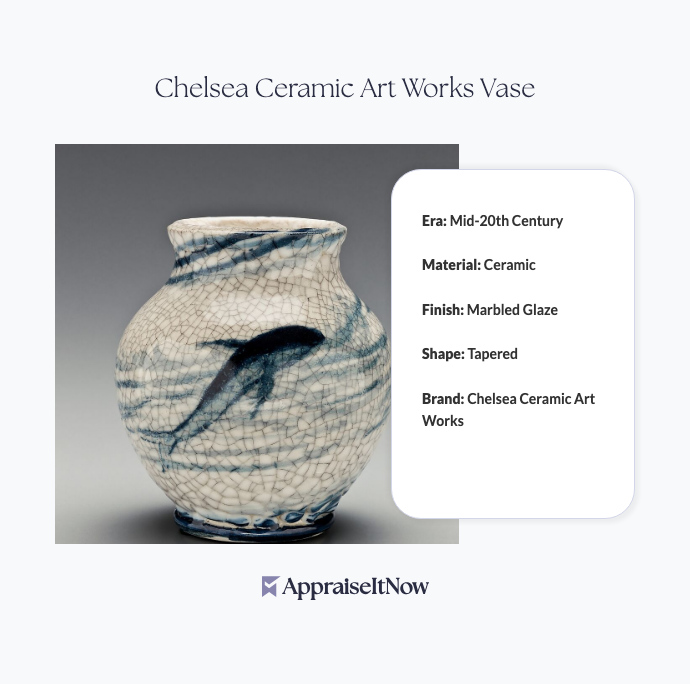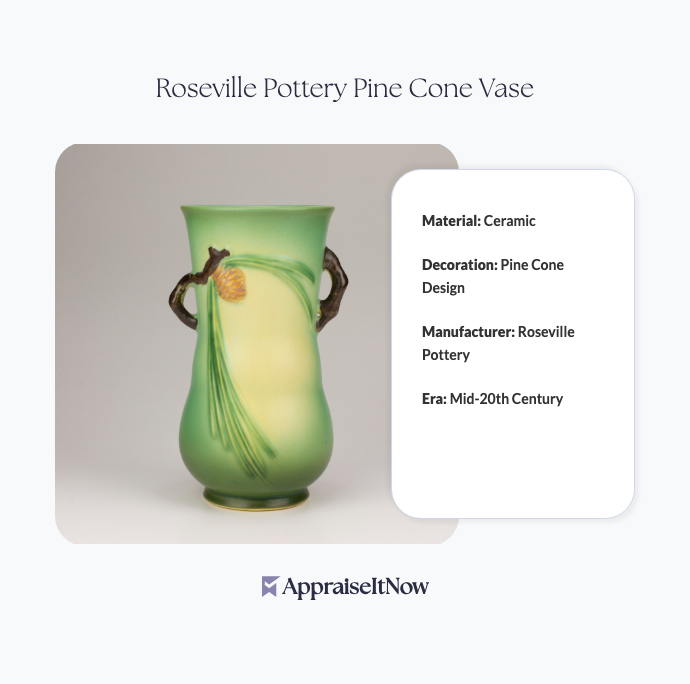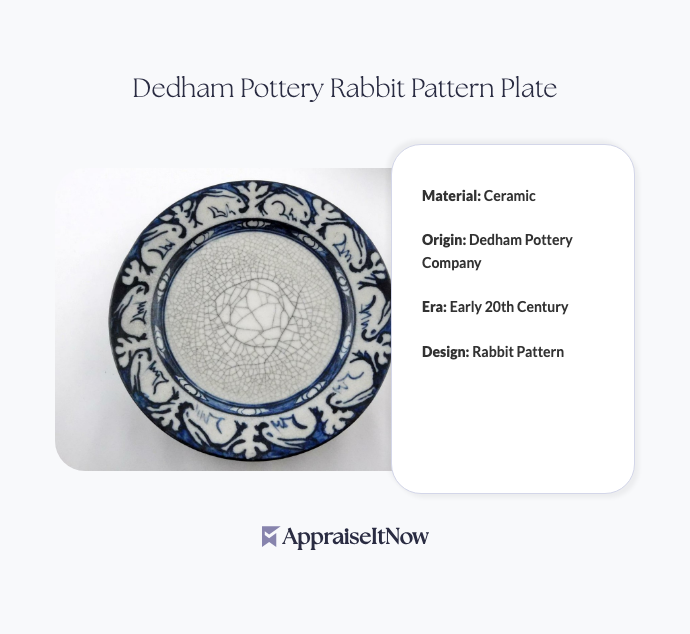<h1>How to Get Your Chinese Export Porcelain Appraised</h1>
<p>Chinese export porcelain, commonly known as Canton porcelain, represents one of the most collectible categories in the decorative arts market. Pieces from the 18th and 19th centuries can command valuations between <strong>$500 and $5,000</strong>, with rare or historically significant examples fetching substantially more. If you own Canton ware—or suspect you do—understanding how to navigate the appraisal process ensures you receive accurate documentation for insurance, sale, or collection purposes.</p>
<h2>What Makes Chinese Export Porcelain Valuable?</h2>
<p>Canton porcelain earned its premium market position through centuries of prestigious demand and exceptional craftsmanship. The style emerged from Guangzhou (formerly known as Canton) in southern China, where artisans developed unique production techniques and decorative approaches specifically designed for Western tastes. First exported to Europe during the 17th century, these pieces became highly prized by European nobility and were frequently exchanged as diplomatic gifts, establishing a market legacy that persists today.</p>
<p>The geography matters significantly. Canton's position as China's primary trade port created a bottleneck of production that concentrated expertise and quality control in a single region. This geographic concentration of skilled artisans produced consistent excellence that distinguishes Canton wares from other Chinese export ceramics produced elsewhere. Collectors worldwide actively seek these pieces, making them central to serious porcelain collections and museum acquisitions.</p>
<div class="callout tip"><p><strong>Collector's Insight</strong></p>
<p>Canton porcelain pieces with documented provenance from notable collections or families often command 15-25% premiums over similar unmarked examples.</p></div>
<p>The rarity factor directly determines value. Unlike mass-produced contemporary ceramics, each Canton porcelain piece was hand-painted with intricate designs featuring dragons, phoenixes, and elaborate landscape scenes. Well-preserved examples become increasingly scarce as time diminishes the surviving population of quality pieces. When combined with the unique glaze and painting techniques specific to Guangzhou artisans, this rarity creates the strong collector demand that supports the $500-$5,000 valuation range.</p>
<h2>Identifying Authentic Canton Porcelain</h2>
<p>Distinguishing genuine Canton export ware from reproductions requires understanding specific identifying markers. Is your porcelain actually Canton, or could it be a later production or domestic Chinese piece? The answer lies in examining several technical and visual characteristics that professional appraisers use to authenticate pieces.</p>
<p><strong>Glaze characteristics</strong> provide the first authentication checkpoint. Genuine Canton porcelain displays a distinctive glaze quality with specific color properties and surface texture that modern reproductions struggle to replicate convincingly. The glaze should have a subtle warmth and particular translucency when held to light—traits that emerge from period production methods rather than contemporary manufacturing techniques.</p>
<p><strong>Painting techniques and motifs</strong> offer crucial authentication clues. Authentic Canton wares feature hand-painted designs executed with brushwork consistent with 18th and 19th-century practices. The palette typically includes cobalt blue, reds, greens, and gold gilding applied in patterns that reflect Western aesthetic preferences of the export period. How can you tell if your piece is antique or a modern reproduction? Genuine examples show variations in hand-application that mass-production cannot replicate, with slight irregularities that authenticate rather than diminish value.</p>
<p><strong>Porcelain marks and signatures</strong> represent another critical authentication layer. While many Canton pieces lack marks entirely, those bearing maker's marks, reign marks, or factory signatures provide valuable authentication documentation. The question of how to read and interpret Chinese porcelain marks requires expertise that professional appraisers possess. Knowing whether marks are painted, impressed, or stamped helps distinguish period-appropriate pieces from later imitations, as production marking methods changed significantly over time.</p>
<p>The weight and feel of authentic Canton porcelain differs noticeably from later reproductions. Genuine pieces display a particular density and warmth consistent with period production materials. Modern porcelain, regardless of quality, typically exhibits different tactile properties that trained professionals immediately recognize.</p>
<h2>Technical Characteristics That Drive Appraisal Values</h2>
<p>When appraising Chinese export porcelain, specialists examine multiple technical factors that establish fair market value. Understanding what experts evaluate helps you prepare documentation and provides realistic expectations for your piece's worth.</p>
<p><strong>Condition assessment</strong> represents the most immediate value driver. Professional appraisers evaluate cracks, chips, crazing (fine surface fractures), staining, and restoration work when establishing valuations. A pristine example commands substantially higher value than a comparable piece with even minor damage. More importantly, how condition, restoration, and missing parts affect the value of Canton porcelain can dramatically shift pricing. Pieces with original condition but minor age-related wear typically hold stronger values than those with heavy restoration, even if restoration appears visually perfect.</p>
<p><strong>Size and form</strong> influence value significantly. Dinner services, punch bowls, and large platters demonstrate the artisan's full technical capability and require proportionally more hand-painted detail, justifying premium valuations. Smaller pieces like cups or saucers typically value lower per unit, though complete sets command multiplicative value increases due to rarity of intact service groupings.</p>
<p><strong>Decorative complexity</strong> directly correlates with appraisal value. Canton pieces featuring elaborate multi-color compositions with gilded accents value substantially above simpler blue-and-white designs. The level of hand-painted detail—whether showing intricate landscape scenes, figure compositions, or elaborate border treatments—represents invested artisan hours that contemporary collectors recognize and reward.</p>
<p>Rarity within the Canton export category creates distinct value tiers. Most sought-after patterns and styles in Chinese export porcelain fetch premiums because they represent either limited production runs or particular aesthetic achievements. Pieces displaying exceptional technical mastery or distinctive design innovations command collector attention and corresponding price appreciation.</p>
<div class="callout note"><p><strong>Market Reality</strong></p>
<p>Non-restored pieces in good condition typically appreciate faster than heavily restored examples, even when visual appearance is comparable, because collectors value authenticity and period integrity.</p></div>
<h2>When Professional Appraisal Becomes Essential</h2>
<p>You should seek professional appraisal services for your Chinese export porcelain in several specific situations. Understanding when professional expertise becomes essential helps you make timely, informed decisions about your collection.</p>
<p><strong>For insurance purposes</strong>, professional appraisals provide the documented valuations that insurers require. Whether adding Canton porcelain to your homeowner's policy or establishing coverage for a valuable collection, insurers demand certified appraisals from qualified experts. These appraisals establish the replacement cost that ensures adequate coverage in case of loss or damage—a protection that vague estimates cannot provide. Our specialists deliver USPAP-compliant documentation that meets insurance company standards nationwide.</p>
<p><strong>Before selling</strong>, accurate professional appraisals inform your pricing strategy and market positioning. Whether pursuing auction house placement, private treaty sales, or dealer transactions, understanding fair market value prevents both underpricing your assets and establishing unrealistic expectations. The question of what documentation, provenance, or photos you should provide to get an accurate appraisal for Canton export porcelain can be answered comprehensively by professional services that guide preparation throughout the process.</p>
<p><strong>For estate planning and tax purposes</strong>, documented appraisals establish fair market values required by executors, tax professionals, and beneficiaries. High-value collections require professional certification to defend values claimed for tax purposes and to facilitate equitable asset distribution among heirs. This documentation prevents disputes and ensures compliance with regulatory requirements.</p>
<p><strong>When authenticating suspicious pieces</strong>, professional appraisers can definitively determine whether your porcelain represents genuine period production or contemporary reproduction. Their expertise includes identifying reliable ways to authenticate rare Canton porcelain without destructive testing, protecting your piece's integrity while providing conclusive authentication.</p>
<h2>Geographic Origin and Market Value Implications</h2>
<p>Does geographic origin markedly change market value compared with other export centers? This question receives a nuanced answer rooted in production history and collector perception. Canton porcelain maintains particular prestige because Guangzhou's position as the primary export port concentrated China's finest ceramicists in this single region. However, porcelain produced in other Chinese centers—Jingdezhen for instance—sometimes commands comparable or even superior valuations based on specific stylistic qualities and rarity.</p>
<p>What distinguishes Canton pieces is their consistent association with the established European market preferences and diplomatic gift traditions. Collectors actively seek Canton attribution specifically because it signals proven export-market quality and historical significance. Geographic origin thus influences value through collector demand rather than inherent technical superiority.</p>
<p>Understanding how experts identify Chinese export porcelain versus domestic Chinese wares becomes important when evaluating pieces without clear provenance. Export wares consistently demonstrate design elements created specifically for Western aesthetic preferences, while domestic pieces reflect traditional Chinese artistic conventions. This distinction helps establish geographic origin and corresponding market positioning.</p>
<h2>The Role of Provenance and Documentation</h2>
<p>Provenance—the documented ownership history of your porcelain—substantially influences appraisal values. Pieces with clear documentation showing respected previous owners, prestigious collections, or notable historical associations command 20-50% premiums over comparable examples without documented history. Can you trace your Canton piece back several generations? Documentation proving long-term family ownership or collection attribution becomes valuable authentication supporting higher appraisals.</p>
<p>Professional appraisers evaluate how well you've documented your piece's history. Photograph your Canton porcelain from multiple angles, including close-ups of any marks or signatures. If you possess historical purchase receipts, exhibition catalogs, or correspondence relating to your piece, compile this documentation for your appraiser. These materials directly support authentication and value determination while creating a complete record beneficial for insurance, sale, or estate purposes.</p>
<p>When auction records and current market trends influence the valuation of Canton porcelain, professional appraisers access this data through market databases and comparable sales analysis. They understand how recent auction results and private sales affect current fair market value, ensuring your appraisal reflects today's market conditions rather than outdated assumptions.</p>
<h2>Practical Steps for Obtaining Your Appraisal</h2>
<p><strong>Gather preliminary information</strong> before contacting an appraiser. Document dimensions (height, width, diameter as appropriate), any visible marks or signatures, condition notes including cracks or repairs, and photographs from multiple angles including markings. This preparation streamlines the appraisal process and demonstrates professionalism to the evaluating expert.</p>
<p><strong>Select a qualified appraiser</strong> with specific expertise in decorative arts and Asian ceramics. Look for credentials including membership in professional organizations like ISA (International Society of Appraisers), ASA (American Society of Appraisers), or AAA (American Association of Appraisers). These credentials indicate formal training, adherence to ethical standards, and commitment to USPAP compliance.</p>
<p><strong>Understand appraisal timelines</strong> when planning your valuation. A formal, USPAP-compliant appraisal for antique Chinese porcelain typically requires 1-3 weeks depending on research scope and appraiser workload. Rush services may be available at premium rates for time-sensitive situations. AppraiseItNow's streamlined platform reduces these timelines while maintaining rigorous evaluation standards, often delivering certified appraisals within 5-10 business days.</p>
<p><strong>Prepare for the appraisal process</strong> by understanding what services are included. Professional appraisals typically encompass detailed condition assessment, photographic documentation, market research, comparative analysis, authentication verification, and comprehensive written reporting suitable for insurance, sale, or estate purposes. The specific scope depends on your intended use and the appraiser's expertise level.</p>
<div class="callout tip"><p><strong>Pro Tip</strong></p>
<p>Maintain a detailed inventory of your Canton porcelain collection with photographs and acquisition information. This documentation proves invaluable for insurance claims, estate planning, and appraisal processes.</p></div>
<h2>Market Value Context and Investment Perspective</h2>
<p>Understanding how auction records and current market trends shape Canton porcelain valuations provides important context for your appraisal. Recent market activity demonstrates strong collector demand for authentic period pieces in good condition. High-quality examples consistently achieve their estimated values at auction, with exceptional pieces frequently exceeding pre-sale estimates by 20-40%.</p>
<p>The broader context of Asian antique collecting shows consistent appreciation for decorative ceramics. Museums worldwide actively acquire quality Canton porcelain for their collections, creating institutional demand that supports private market values. This combination of individual collector enthusiasm and institutional acquisition keeps Canton ware positioned as one of the stronger segments within the decorative arts market.</p>
<p>Are there reliable ways to track this market performance? Professional appraisers access detailed sales data through multiple sources, including auction house results, dealer networks, and private sales records. This market intelligence ensures your appraisal reflects current conditions rather than historical pricing.</p>
<p>Our broader guides on <a href="/blog/appraising-asian-art-and-antiques-understanding-cultural-significance-and-value">appraising Asian art and antiques</a> and <a href="/blog/exploring-the-role-of-provenance-in-art-appraisals-assessing-historical-significance">understanding cultural significance in appraisals</a> provide deeper context on how international appreciation for Asian ceramics influences market dynamics and valuation methodology.</p>
<h2>Selling Your Canton Porcelain</h2>
<p>When you've determined your Canton porcelain's market value through professional appraisal, several sales options exist with different pricing implications. What are the best options for selling valuable Chinese export porcelain—auction, dealer, or private sale—and how do prices differ? Each approach offers distinct advantages depending on your circumstances.</p>
<p><strong>Auction houses</strong> specializing in decorative arts and Asian antiques provide broad market exposure to serious collectors worldwide. Auction results often achieve strong prices for quality pieces, particularly those with documented provenance or exceptional rarity. However, auction houses typically charge buyer's premiums (15-25%) and seller's commissions (10-15%), affecting net proceeds.</p>
<p><strong>Specialized dealers</strong> in Chinese export porcelain offer direct purchase options with no commission but typically below auction estimates. Dealers provide faster transactions and immediate payment, valuable for those seeking quick liquidity without marketing delays.</p>
<p><strong>Private sales</strong> through collector networks or personal connections can maximize prices when you locate genuinely interested buyers. This approach requires more effort and carries greater uncertainty but eliminates intermediary commissions.</p>
<p>Your certified appraisal becomes essential documentation regardless of sales method chosen. Insurance-value appraisals help you establish realistic asking prices, defend valuations in negotiations, and demonstrate expertise to potential buyers.</p>
<h2>Conclusion: The Value of Professional Appraisal Certainty</h2>
<p>Chinese export porcelain from Canton represents a significant category within the decorative arts market, with pieces regularly valued between $500 and $5,000 depending on condition, rarity, and provenance. Whether you're buying, selling, insuring, or planning your estate, professional appraisal services provide the documented expertise and market knowledge essential for confident decision-making.</p>
<p>The distinction between casual estimation and professional certification becomes particularly important with valuable antiques. Certified appraisals deliver USPAP-compliant documentation accepted by insurers, courts, and financial institutions—credentials that informal opinions cannot provide. Our experts at AppraiseItNow bring specialized knowledge of Canton porcelain characteristics, authentication techniques, and current market dynamics to every evaluation.</p>
<div class="callout note"><p><strong>Key Takeaway</strong></p>
<p>A professional appraisal of your Chinese export porcelain provides definitive authentication, accurate fair market value determination, and certified documentation essential for insurance, sale, or estate planning purposes. This expert assessment transforms uncertainty into confidence, ensuring your valuable collection receives the recognition and protection it deserves.</p></div>







.avif)







